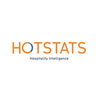UK Chain Hotels Market Review July 2009 | TRI Hospitality
London occupancy exceeds 2008 levels
London hotel occupancy figures for July 2009 exceeded levels achieved in the same month last year, according to the latest HotStats survey by industry experts, TRI Hospitality Consulting. The capital’s hoteliers successfully drove volume to an historically high 88.6% for July by further discounting room rates. Achieved average room rates remain below levels achieved last year at £115.65, a drop of 13.1%.
“The increase in volume and relatively strong rate performance compared to last year is all the more remarkable given the lack of the biennial Farnborough Show in 2009” says Jonathan Langston, managing director, TRI Hospitality Consulting.
Compared to July 2007 (the last comparable period without Farnborough demand), occupancy levels in 2009 improved marginally by 0.1 percentage point and achieved average room rates increased by over 2.7% or £3. Given the current economic climate, the outperformance of the London hotel market over the comparable period in 2007 demonstrates the capital’s strong market performance.
In the seven months to July 2009, average occupancy levels in the capital were down 2.2 percentage points at 78.9% and achieved average room rates dropped by 8.4% to £109.47, compared to the same period last year. “Year-to-date figures for July 2009 show an encouraging improvement compared to the six months to June and confirm that the recession impact is lessening”, says Langston.
Despite a relatively strong performance, occupancy levels in the Provinces in July 2009 remain below last year at 74.3%, a decrease of 1.7 percentage points. Compared to last year, achieved average room rates dropped by approximately £7 to £67.55.
Cumulatively, the Provinces were able to reduce their performance gap in all of their key performance indicators (Occupancy, Achieved Average Room Rate, Revenue per Available Room, Total Revenue per Available Room, Payroll Percentage and Gross Operating Profit per Available Room) over the six months to June 2009.
“The occupancy and rate performance in July 2009 reduced the year-to-date performance gap to 2008 for both the London and Provincial hotel market”, says Langston.
Middle Eastern demand driving hotel market
The London hotel market in July is driven by strong Middle Eastern demand, which generally continues until September. Primarily upmarket hotels in the West End and Knightsbridge strongly benefit from this demand sector.
Demand is driven by the extended average length of stay of Middle Eastern visitors of around 14 days, compared to the London leisure sector average of just over five days. Furthermore, the local hotel market benefits from large party bookings of around 30 bedrooms.
In contrast to other demand sectors during the summer holiday season, Middle Eastern demand is not price sensitive, which considerably drives rates. BBC estimates that the Middle Eastern visitors will spend £250 million in the West End between July and September this year, which will include retail and the hotel sector. The average spend by visitors from Saudi Arabia is almost £1,700 and from the United Arab Emirates over £1,100 per stay, compared to the London leisure sector average of around £555.
Heathrow recording busiest July since 2006
Latest statistics published by BAA underline the stabilising passenger figures across the group. Heathrow handled almost 6.5 million passengers, the busiest July at the airport since 2006 and the third-busiest month on record.
Edinburgh Airport also enjoyed passenger growth for the fourth consecutive month, with volume increasing by 5.6%.
BAA recorded a growth in European scheduled and long-haul traffic, excluding North Atlantic. European charters, UK domestic and North Atlantic traffic decreased further.
Overall, the downward trend in passenger numbers in the UK is lessening, driven by a strong performance of Heathrow. Year-to-date figures for the seven months to July 2009 report a drop in UK passenger numbers by 6.6%, compared to 7.5% for the six months to June 2009.
Jonathan Langston
+44 (0)20 7892 2201
HotStats Limited
